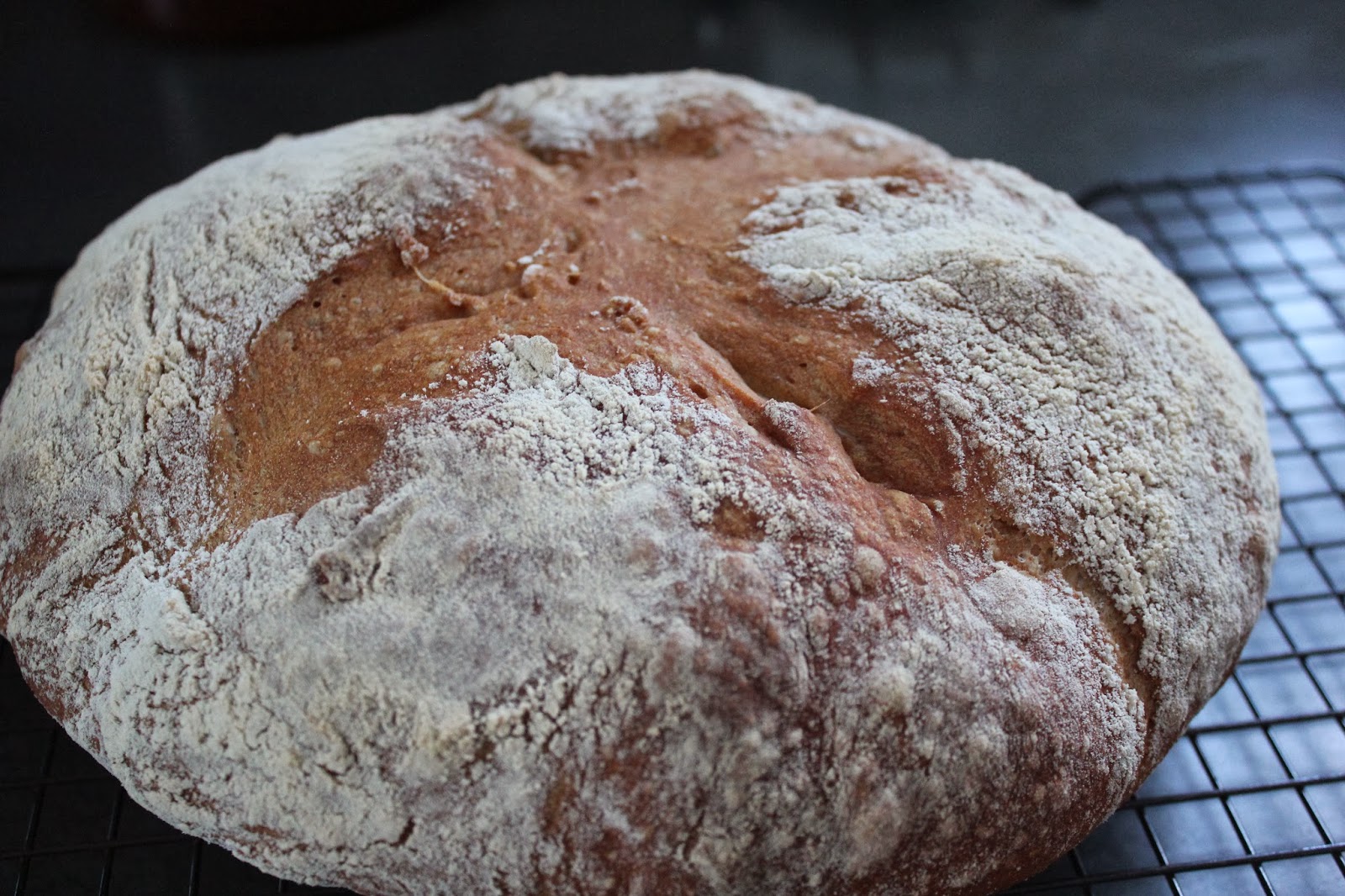1.22.2014
An Honest Loaf
That's the name of the recipe I followed. And that's exactly what this bread is. An honest loaf. It's a simple mix of flours, yeast, water, and salt. Isn't it amazing that those few ingredients combine to make something as wonderful as a loaf of bread?
It floors me every time I make bread. And this comes from the girl who makes all sorts of intricate cakes. There's just something about turning to that simple flour-yeast-water-salt combination and ending up with a hearty, rustic, crusty loaf like this one.
In the introduction to this recipe, David Tanis says "Making bread is squarely in the spirit of good things well worth the wait." It's so true. He writes about the move toward bread machines and instant loaves and says, "Obviously, I think they miss the whole point of making bread." He goes on to write about the enjoyment of waiting for the bread to rise and knowing that a slow, cool rise will produce good bread.
Up to this point I've been baking and sharing breads that have had more of a simple mix, let rise, shape, let rise, bake sort of formula. This bread begins with a starter of yeast, warm water, and bread flour that sits at room temperature for an hour.
Once the starter is all frothy and has risen in its bowl, you add more bread flour, whole-wheat flour, semolina, and salt to it to form a wet and sticky dough, which gets refrigerated overnight.
The next day, you turn the dough out onto a floured counter, knead it, and shape it into a smooth ball. (A little easier said than done -- I found the dough to be very wet and sticky but I was able to shape it by generously dusting my hands with flour.)
That ball of dough then gets set in a low-sided wide bowl lined with a floured towel or linen napkin. The top gets a nice dusting of semolina, and then the whole thing gets covered so the dough can rise again, this time at room temperature for a few hours.
Then it's time to bake it. The dough gets turned out onto a semolina-dusted baking sheet, topped with flour, slashed, and then baked at 450 for 15 minutes. Then you drop the heat to 400 and bake it for another 45 minutes, to give it that dark golden-brown crust. Finally, you transfer the bread to a rack to cool. (And you do have to let it cool, as much as you'll want to tear into the moment it comes out of the oven.)
"As the bread cools, you'll hear it making crackling sounds. That is the sound of an honest loaf." - David Tanis
I loved this bread. I loved that the recipe challenged me to make a starter, plan for an overnight rise, deal with a sticky dough… and then stop to listen to the sound of my freshly baked bread. And I shouldn't even get started on the intoxicating aromas filling our house as the loaf baked.
For the recipe, check out David Tanis' book Heart of the Artichoke and Other Kitchen Journeys.
Do you enjoy the process of baking bread?
This post contains an Amazon affiliate link to a cookbook I love. If you follow the link to purchase the cookbook or make other purchases, I'll earn a few cents.














